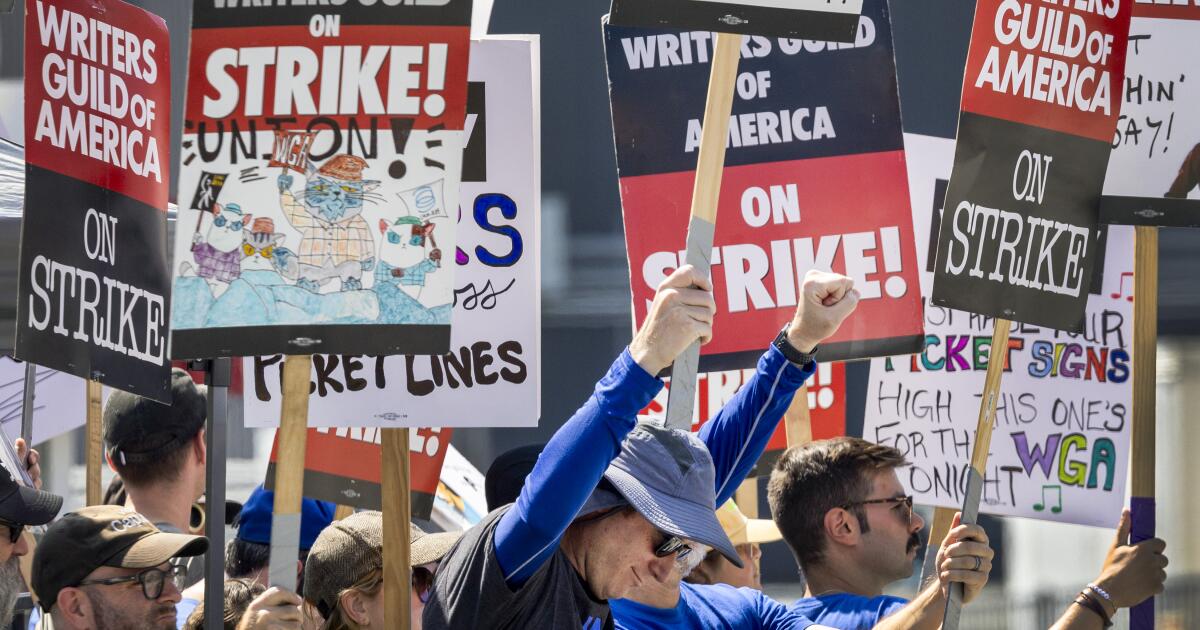The long-awaited end to the historic 146-day writers’ strike has finally arrived. While details are still limited, the Writers Guild of America (WGA) is celebrating the tentative agreement, calling it “exceptional” and highlighting significant gains in various areas. The union’s victory can be attributed to several factors, including effective organization, support from SAG-AFTRA, and strategic mistakes made by studio executives. However, one major factor that ignited the movement was the writers’ firm stance against the exploitative use of AI by their bosses.
During a time when the threat of software automation undermining various professions was widespread, the strike became a symbolic battle between humans and AI. The public overwhelmingly supported the writers in this battle. According to a Gallup poll, 72% of Americans supported the writers, compared to a mere 19% who sided with the studio executives.
When negotiations between the WGA and the studios began, concerns about the use of generative AI like ChatGPT were not initially at the forefront. The WGA’s initial proposal simply stated that AI should not be used to create original scripts. However, it was only when the studios adamantly refused this proposal that the writers recognized the seriousness of the situation.
It became clear that the studios intended to use AI as leverage against the writers, both as a threat and as a means to justify reduced rewrite fees. This realization prompted the writers to take a stand. Signs denouncing AI started going viral on social media, and news outlets began reporting on the conflict.
During the strike, AI became the primary issue discussed by the writers on the picket lines. The technology posed a direct existential threat to the profession of being a screenwriter. Opinions varied regarding the exact nature of this threat. Some believed AI was incapable of producing quality scripts and feared it would be used to suppress wages. Others genuinely worried that studios would eventually replace them with generative AI that could create acceptable content. They feared losing the human experience and artistic touch that writers bring to their work, instead being subjected to content created by wealthy Silicon Valley tech entrepreneurs.
Regardless of their individual concerns, all writers understood the danger of granting studios the power to decide how to use generative AI. Everyone recognized the importance of drawing a line against bosses automating their work as a cost-cutting measure or for improved efficiency.
This resistance had a ripple effect. Even actors, like SAG member Ellen Adair, expressed strong support for the writers’ strike and their stance against AI. When it became evident that studios intended to automate not only writing but also acting through motion capture, actors joined in the fight. SAG initiated their own strike in July, with influential figures like Bryan Cranston and Fran Drescher speaking out against AI.
The writers’ red line against AI not only inspired and unified the screen actors who faced similar fears but also resonated with other workers witnessing the rise of AI in their workplaces. Illustrators, journalists, and copywriters nervously observed their work drying up as management embraced AI tools. This solidarity among workers against exploitative AI practices was remarkable.
Interestingly, as observers and reporters witnessed the writers’ resistance, they began referring to the strikers as “Luddites” – not as a derogatory term, but rather acknowledging their stance favorably. This stemmed from a growing understanding that the original Luddites were not against technology itself; they opposed its use to exploit or displace workers. The likes of Wired and Fast Co. started portraying the strikers as modern heroes.
I have extensively researched and written about the real Luddites, and it is clear that they were intelligent and technologically savvy workers. They confronted entrepreneurs attempting to automate their jobs or replace them with machines. They resorted to force only after peaceful efforts to protect their rights failed. They were not against most technology, but they drew the line at machines that exploited them for another’s enrichment.
By drawing a red line against AI, the writers followed in the footsteps of the original Luddites. This well-executed tactic won them widespread popularity, just like the Luddites of the early Industrial Revolution, who were once beloved in England. This victory is worth celebrating because it signifies the beginning of a larger movement. Hollywood is not the only industry seeking to cut costs by automating work with generative AI.
From the start of the strike, I have argued that the writers are leading the way in showing workers everywhere how to resist exploitative uses of AI in the workplace. The recent outcome further supports this belief. There is immense power in taking a firm stand, refusing to let technology erase jobs, and voicing concerns about the impact of technology on our lives. If it appears that technology will only degrade or disrupt our way of life, there is great power in saying no. The writers have demonstrated this power.
Denial of responsibility! Vigour Times is an automatic aggregator of Global media. In each content, the hyperlink to the primary source is specified. All trademarks belong to their rightful owners, and all materials to their authors. For any complaint, please reach us at – [email protected]. We will take necessary action within 24 hours.


